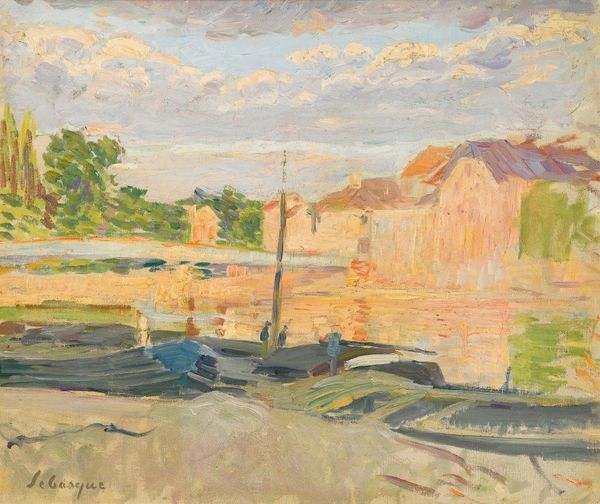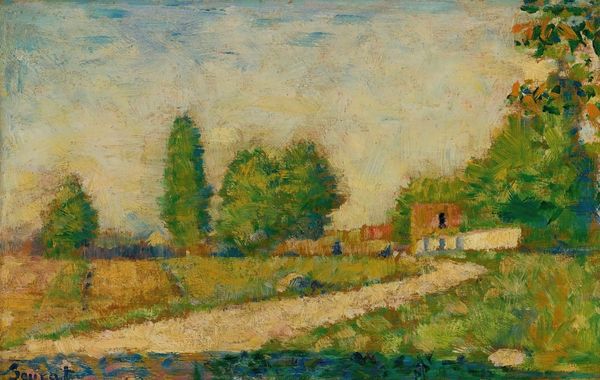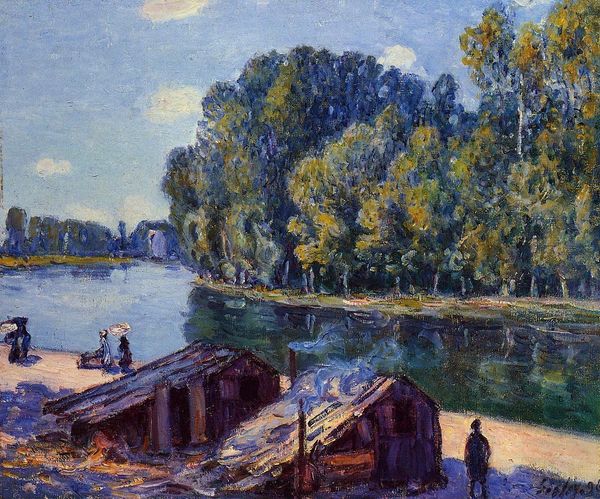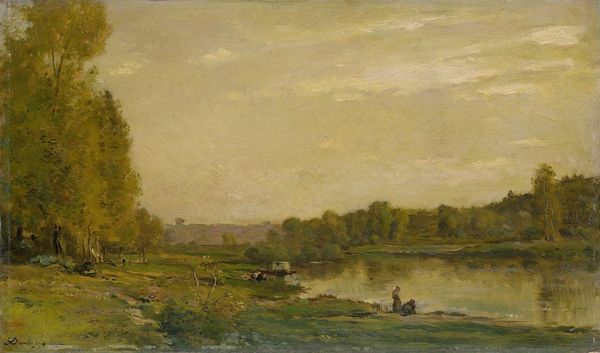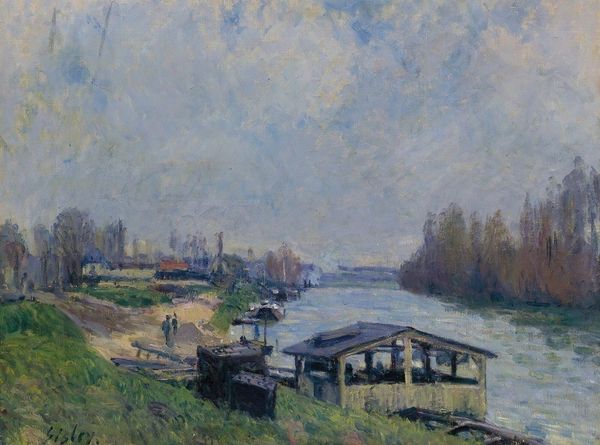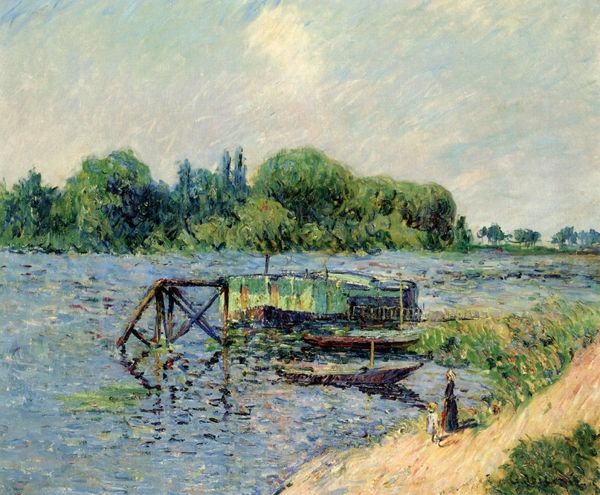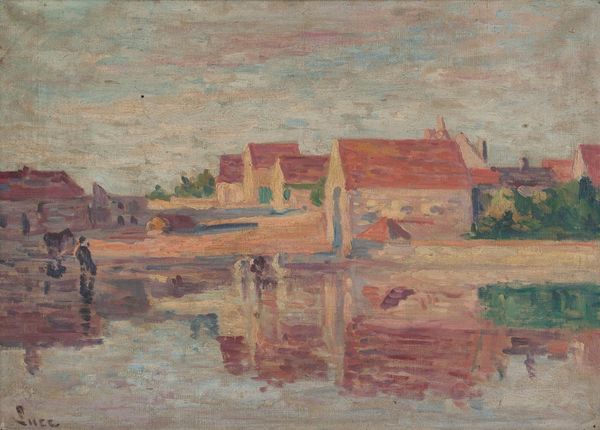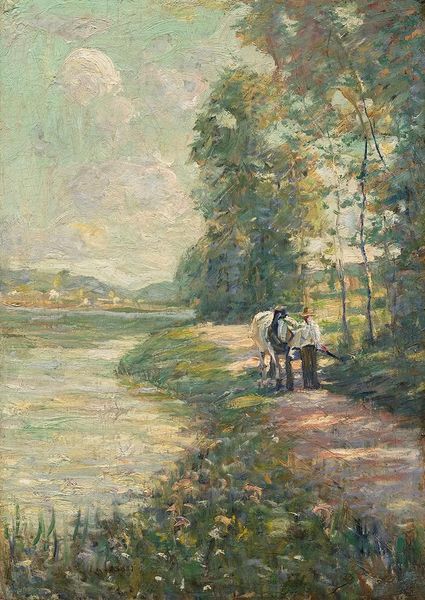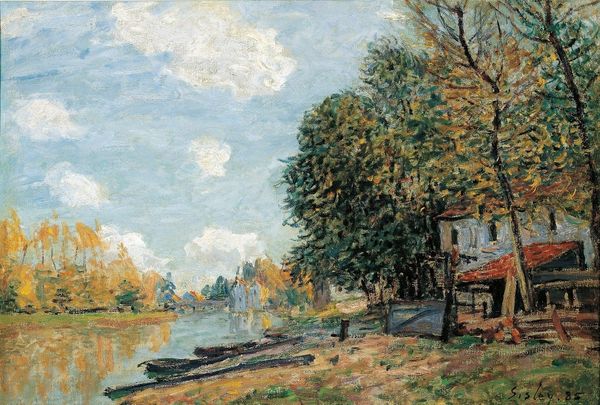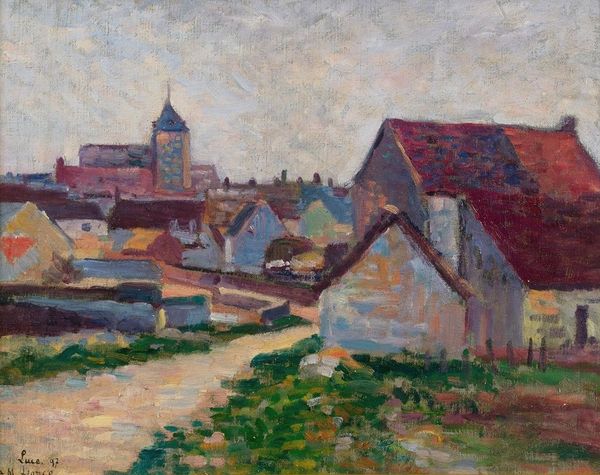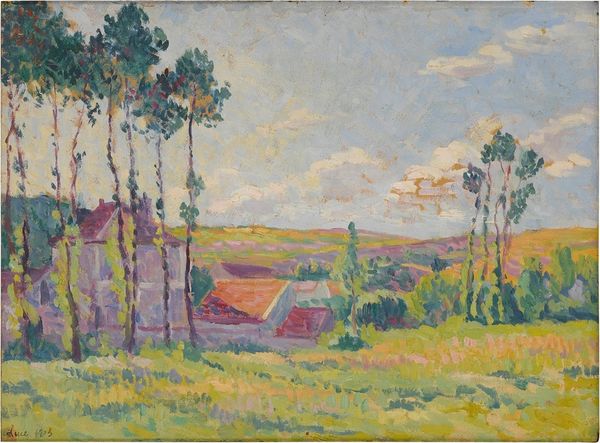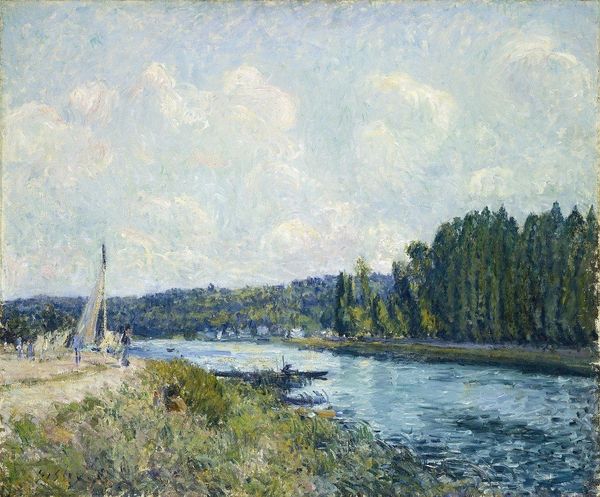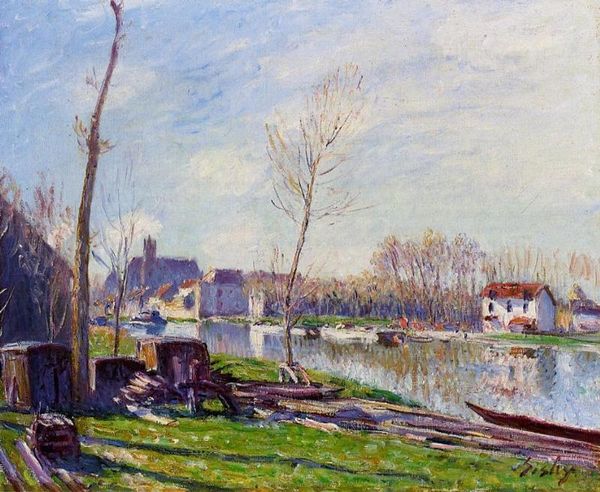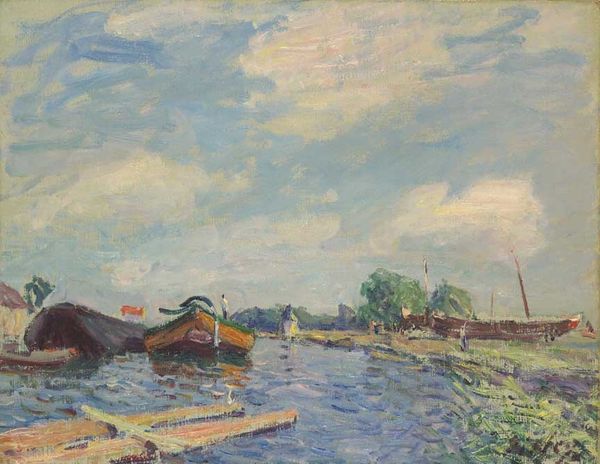
Copyright: Public Domain: Artvee
Editor: Here we have Maximilien Luce’s “Pont Aux Environs D’angers,” painted in 1916 using oil on canvas. It has a relaxed feel, like a moment suspended in time. What do you see in this piece, considering its historical and visual context? Curator: The bridge looms, a monument to human engineering, yet almost yields to the encroaching greenery. Bridges are powerful symbols. Do they speak to you of connection, or perhaps constraint? Consider, too, the date, 1916. World War I raged; what of the absent crowds, the leisure implied by the fishermen, the solid permanence suggested by that stone bridge? Editor: It’s interesting to think about that contrast, the war versus the pastoral scene. Is that intentional, do you think? Curator: Intentionality is a slippery concept. More accurately, these symbols, the bridge, the figures, operate within a field of cultural memory. Bridges promise safe passage; fishermen, sustenance and contemplation. By showing the persistence of everyday life, is the artist subtly offering hope, a visual promise that even amidst chaos, life finds a way? Notice how the composition gently leads the eye across the water to the bridge and sky. Editor: I didn’t think about it that deeply, but I now see a subtle dialogue happening within the painting itself. It makes you consider larger themes like time and conflict. Curator: Precisely. Artists often draw upon shared understandings, visual shorthands if you will. And it’s how these symbols resonate – or don't – with viewers across time that grants a painting its continued relevance. What will these symbols mean a century from now, I wonder? Editor: That’s definitely something to consider; it seems like the symbolism evolves over time. Thanks for the insight!
Comments
No comments
Be the first to comment and join the conversation on the ultimate creative platform.
